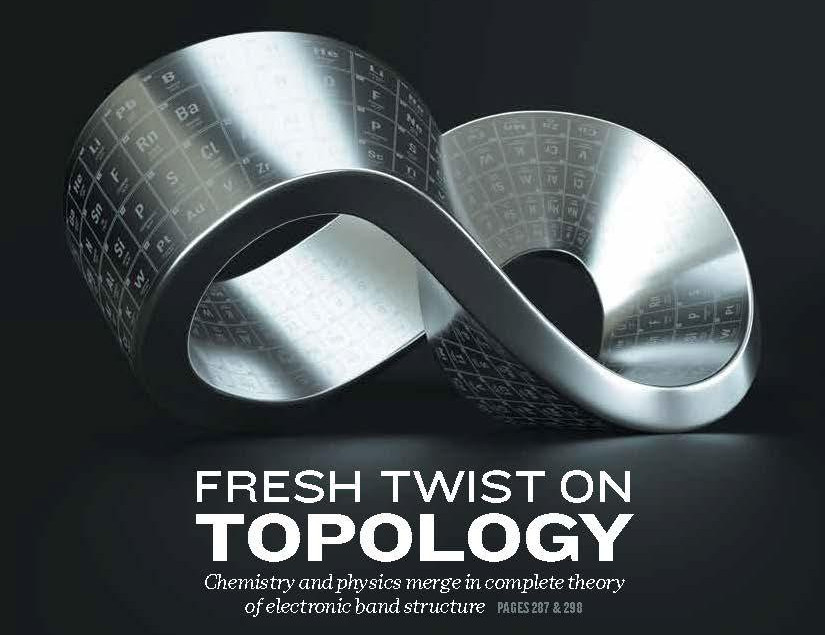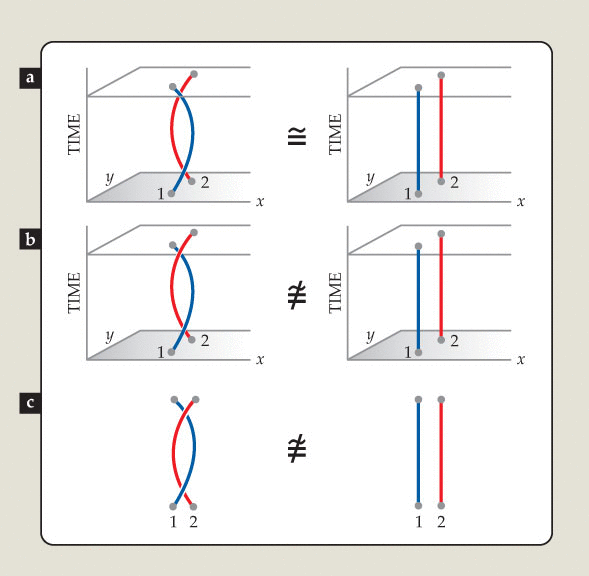Navigation auf uzh.ch
Navigation auf uzh.ch
Below I list some of the current research topics of my group. A complete list of our previous publications is available here.
With my students, postdocs and colleagues we have already discovered different topological phases of metals and found existing materials that host the predicted topological phases. Nonetheless, many other predictions of topological materials exist, but no material that would be suitable for experimental probes is provided to date. I want to find the needed compounds.

The cover of Nature magazine illustrating the paper of Bradlyn et. al. on classification of non-interacting topological phases. Reproduced from [Nature 547, 7663 journal cover], with permission of NPG Springer.
Finding these topological compounds will allow for experimental progress in the field and identification of phenomena that can be used in future quantum devices.
While Density Functional Theory is a well-accepted way to identify topological phases in weakly interacting materials, the search for more exotic topological phases in strongly correlated compounds requires the development of new numerical approaches to materials calculations.

Braiding of anyons, realized as interacting topological phase of matter. Reproduced from [Physics Today 65, 7, 38 (2012)], with the permission of the American Institute of Physics.
In this direction I want my group to unify the methods we have developed on Wannier function techniques with existing model-aimed numerical methods based on matrix product states and tensor network simulations.
In our previous work we developed an approach to find topologically non-trivial materials using DFT.
Now I want to generalize this approach to interacting systems, in which entanglement plays the role of hybrid Wannier functions of the free fermion approach.